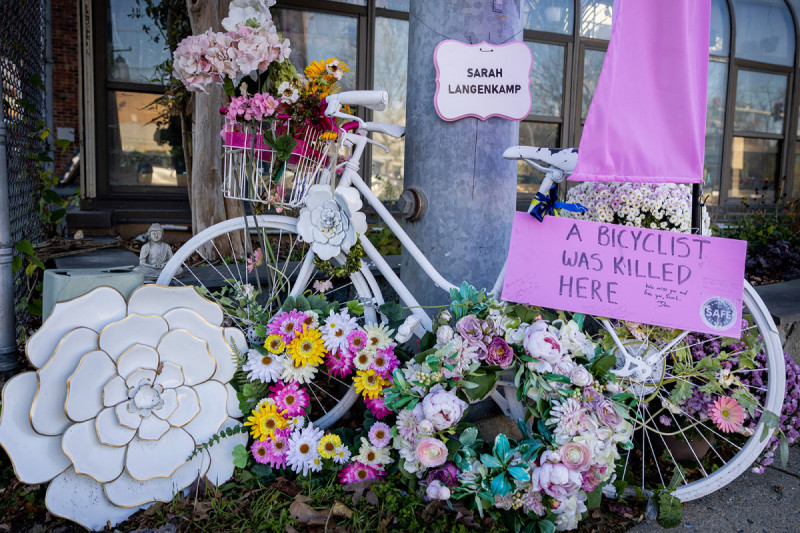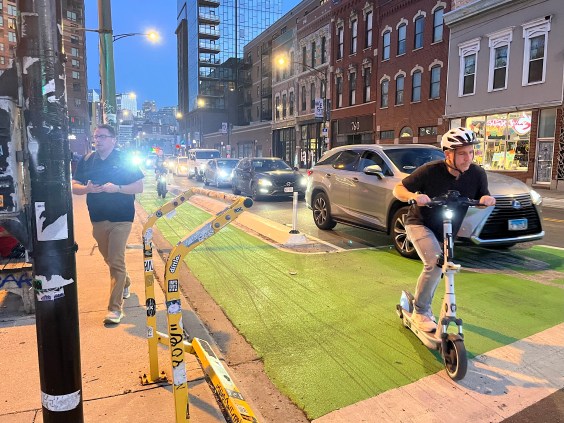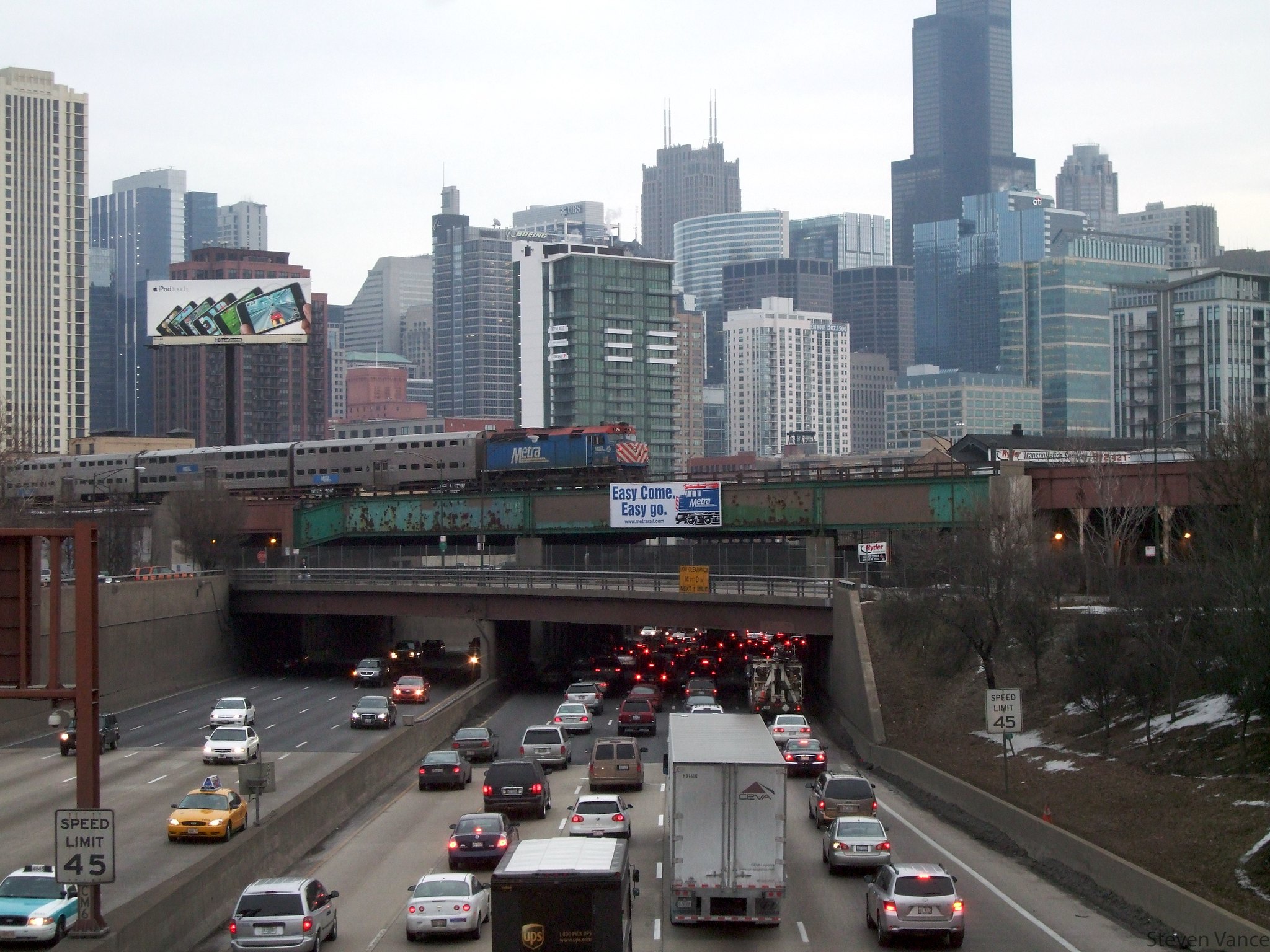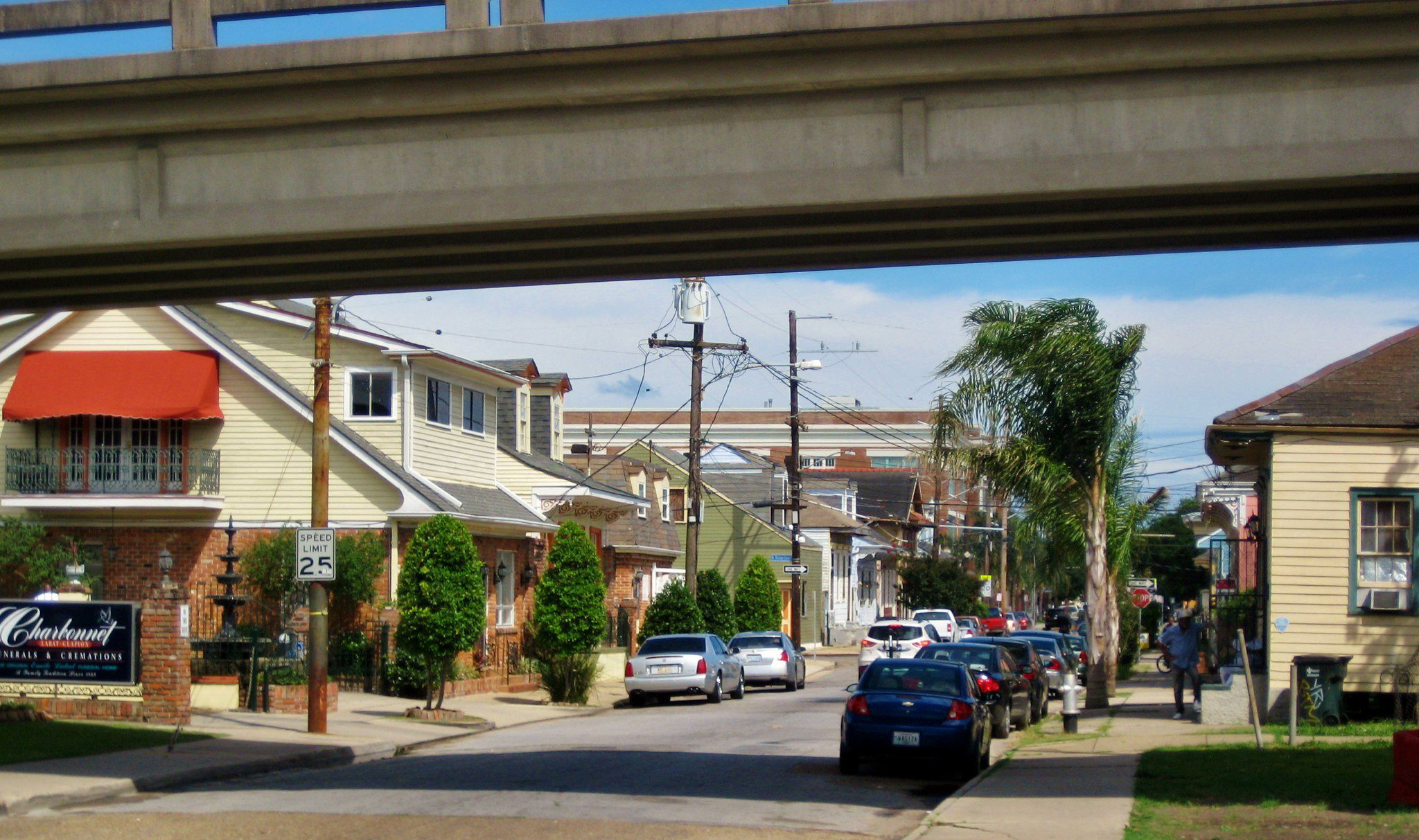U.S. communities would be encouraged to use federal safety dollars to fill the holes in city bike networks under new federal legislation that honors the legacy of an American hero who lost her life in a crash.
Last week, Reps. Earl Blumenauer (D-Ore.) and Jamie Raskin (D-Md.) announced the introduction of the Sarah Debbink Langenkamp Active Transportation Act, which would tweak the regulations on the federal Highway Safety Improvement Program and spur states to spend that money to complete their protected bike and pedestrian networks, potentially saving the lives of people who walk and roll.
The bill is named for a decorated U.S. diplomat who was successfully evacuated from war-torn Ukraine only to be killed just weeks later while biking home from her sons' school in a Washington, D.C. suburb. Because there was no continuous network of protected paths available along her route, Langenkamp was forced to ride in a painted bike lane along a high speed, multi-lane arterial in order to bridge the gap between two off-street trails; instead, a right-turning trucker failed to see her in that painted lane, and she was crushed to death, orphaning her two young children and soon launching a movement to prevent future tragedies.
“We have a responsibility to make our streets safer for cyclists and pedestrians,” Rep. Blumenauer, who is also the founder and co-chair of the Congressional Bike Caucus, said in a release. “Sarah’s work took her to dangerous places around the world. Biking home in our nation’s capitol should not have been one of them.”
A great bill from a terrible tragedy. This bill will unlock $ for bike infrastructure + allow bike/ped safety projects to be fully federally funded (requiring no local match). Thank you @repblumenauer + @RepRaskin. https://t.co/BjQV5amNGC
— Martina Haggerty (@MartinaPVD) March 23, 2023
Established in 2005, the Highway Safety Improvement Program is one of the largest pots of federal money specifically aimed at reducing roadway deaths and serious injuries on all types of roads and among all road users, despite the program's auto-centric name. Much of that money, though, has historically gone towards modest improvements specifically for driver safety, like re-striping freeways and adding rumble strips to highway shoulders; roughly half of states have even taken advantage of a loophole in federal law that allows them to "flex" up to 10 percent of the money away from safety projects entirely.
Under the Bipartisan Infrastructure law, though, the program underwent several significant shifts, including a funding boost that will deliver states $15.6 billion across five years and a new provision that will require them to spend 15 percent of safety improvement program dollars specifically on vulnerable road user safety — though, unfortunately, only if people who walk and roll make up 15 percent or more of an individual state's roadway deaths. In February of last year, the Federal Highway Administration also released important (though non-binding) guidance urging states to give protect vulnerable road users “additional consideration” when they decide how to spend their funds, over and above other types of infrastructure.
The Langenkamp law seeks to build on those successes in three critical ways.
First, the bill will put a little more money behind the FHWA's guidance by allowing states to fund 100 percent of an active transportation project's cost from HSIP funds, rather than asking them to chip in 20 percent of the project cost locally, as they're required to now.
Second, it would allow local, regional, and metropolitan governments to nominate those projects directly, rather than relying exclusively on state DOTs who don't know the granular details of where gaps in local active transportation networks actually lie.
And finally, the bill would make it explicit that states can and should spend HSIP money on "the connection of two or more segments of existing bicyclist or pedestrian infrastructure" in addition to standalone bike/walk infrastructure projects and other strategies aimed at curbing vulnerable road user deaths — rather than focusing only on "highway" projects benefiting drivers alone.
While those changes might seem modest, Langenkamp's loved ones hope that they might help communities bridge at least a few of the many dangerous divides in their local active transportation networks — which, for Sarah, might have meant the difference between life and death.
“Sarah fled a war zone only to die on the streets near our nation’s capital,” said Dan Langenkamp, Sarah’s husband, who became a prominent activist for vulnerable road user safety in the wake of her death. “There is simply no reason in the world why deciding to ride a bike in the United States should be a life or death decision. We have to do better.”






